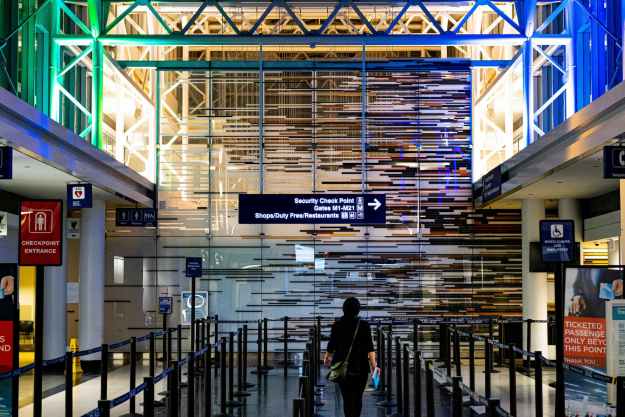If you’ve ever found yourself awake at 3 a.m. staring at the ceiling of your hotel room on your first night in a new destination, you’re not alone. This half-awake/half-asleep phenomenon — which is experienced by an estimated 99% of travelers — is aptly known as “the first night effect” and there’s a scientific reason behind it. Here’s what you need to know and how to best remedy it.
First off, it’s a feature, not a bug, in other animals, particularly marine mammals. Bottlenose dolphins and whales, for example, rest only one half of their brains at a time. In a flock of ducks, those on the outer edge sleep in a similar fashion. It’s an understandable evolutionary mechanism critical to their survival. Think of the awake half of the brain as the night security guard, ensuring part of the animal is always on alert. While you (probably) don’t spend that much time in the wild, the reason for the first night effect in humans stems from the same evolutionary need. Bottom line: we’re biologically hardwired to experience it.
In 1966, Brown University professor, Yuka Sasaki, tested this theory by placing test subjects in a medical scanner to chart their brain activity while sleeping. By measuring slow-wave activity — a steady neuron pulse indicative of deep, restful sleep — she found that every volunteer took longer to fall asleep on the first night than on subsequent nights. In every case, on the first night, the pulses were markedly less on the left side of their brains than on the right. The larger the disparity between the two halves of the brain, the worse the volunteers slept and the longer it took them to fall asleep. Further testing confirmed Sasaki’s suspicions of the first night effect in humans. Additional volunteers were pinged with subtle beeps via headphones throughout the evening. Every test subject was more responsive to the beeps on the first night than on following nights, and only in the left half of their brains. It was a clear indication they were not in a deep sleep state.
While it’s difficult to overcome the effect entirely, Sasaki has two tips for minimizing it. First, spend every night in the same hotel whenever possible. This won’t solve the problem — you’re still likely to toss and turn on your first night traveling. But, it should provide more restful sleep on subsequent nights. If that’s not an option, try staying at the same hotel chain — Marriott, Westin, etc. — wherever you go. It may not be ideal for travelers who prefer Airbnb’s or independent, boutique hotels. But, the consistent decor, atmosphere, and look and feel may provide your brain with a sense of comfort to trick it into believing you’re in a safe, familiar place.


